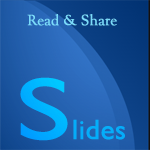
Go Language, An Introduction
This presentation is an introduction on GO language, covering variable declarations, built-in types, type conversions, functions, functions and closures, packages, control structures, maps, structs, interfaces, Error Handling etc.
Transcript
Go Language, An Introduction
Hello World
File : hello.go
package main
import "fmt"
func main(){
fmt.Println("Hello Go!!")
}
Output : Hello Go!!
Variable Declaration
Variable
Variable declaration and initialization
// Declare types after identifier var foo int = 52 // declare the variable with initialization var foo int // declare the variable without initialization var foo, bar int = 56, 9999 // declare more than one variable var foo = 72 // type omitted, will be inferred foo := 72 // shorthand, only in func bodies const constant = "Declare constant this way"
Built-in Types
int int8 int16 int32 int64 uint uint8 uint16 uint32 uint64 uintptr float32 float64 complex64 complex128 bool string byte // alias for uint8 rune // alias for int32 ~= a character (Unicode code point) - very Viking
Type Conversions
var x int = 72 var y float64 = float64(x) var z uint = uint(y) // You can use the following syntax also (alternative syntax) x := 72 y := float64(x) z := uint(y)
Functions
Declaring a simple function
func MyfunctionName() {}
Function with parameters
Function with multiple parameters (different types)
func MyfunctionName(parameter1 int, parameter2 string) {}
Function with multiple parameters (same type)
func MyfunctionName(parameter1, parameter2 string) {}
Function and value return
Function with return type declaration
func MyfunctionName() (string) {
return "return string"
}
Function with multiple return values
func MyfunctionName() (int, string) {
return 200, "Pizza"
}
var a, str1 = MyfunctionName()
Return multiple results, by return
func MyfunctionName() (x int, str1 string) {
x = 200
str1 = "Pizza"
// x and str1 will be returned
return
}
var x, str1 = MyfunctionName()
Functions As Values And Closures
Functions As Values
Call a function :
func main() {
// assign a function to a name
add := func(x, y int) int {
return x + y
}
//call the function
fmt.Println(add(24, 78))
}
Functions as Values and Closures
Go supports anonymous functions, which can form closures. Anonymous functions are useful when you want to define a function inline without having to name it.
func add() func(int) int {
sum := 0
return func(a int) int {
sum += a // sum is declared outside, but still visible
return sum
}
}
Packages
● Declare package at top of every source file ● executables are in package main ● convention: package name == last name of import path ● upper case identifier: exported (visible from other packages) ● Lower case identifier: private (not visible from other packages)
Control structures
if statement
Simple if statement
if x > 0 {
return x
} else {
return -x
}
It is possible to put one statement before the condition
if x := y + z; z < 100 {
return a
} else {
return z - 100
}
for Loops
Only `for` loop is available, no `while`, no `until`
for x := 1; x < 10; x++ {
}
for ; x < 10; { // while - loop
}
for x < 10 { // omit semicolons if there is only a condition
}
for { // you can omit the condition ~ while (true)
}
Switch statement
switch gradeSystem{
case "A":
fmt.Println("Grade A")
// cases break automatically
case "B":
fmt.Println("Grade B")
default:
fmt.Println("Average Grade")
}
Arrays
Declare, set and read
var x [10]int // declare an int array of lenght 10.
x[3] = 100 // set elements
i := x[3] // read elements
// declare and initialize
x := [2]int{1, 2}
x := [...]int{1, 2} // elipsis -> Compiler figures out array length
Maps
Declare, set and read
var m map[string]int
m = make(map[string]int)
m["key"] = 200
fmt.Println(m["key"])
delete(m, "key")
elem, ok = m["key"] // retrive the 'key' if it is present
// map literal
var m = map[string]Vertex{
"Singapur": {1.3000, 103.8000},
"Slovakia": {45.1500, 17.1167},
}
Structs
There are no classes, only structs. Declare, create and access.
// Declaration
type point struct {
X, Y int
}
// Creating
var h = point{1, 2}
// Accessing members
h.X = 4
Methods on structs
There are no classes, only structs. Declare, create and access.
// Declaration
type point struct {
X, Y int
}
func (v point) abs() float64 {
return math.Sqrt(v.X*v.X + v.Y*v.Y)
}
// Call method
v.abs()
Pointers
Go supports pointers, allowing you to pass references to values and records within your program.
p := center{1, 2}
q := &p // q is a pointer to p
r := ¢er{1, 2} // r is also a pointer to center
// The type of a pointer to a center is *center
var s *center = new(center) // new creates a pointer to a new struct instance
Interfaces
Interfaces are named collections of method signatures.
// interface declaration
type geometry interface {
area() float64
}
//square type
type square struct {
width, height float64
}
// implement the interface
func (s square) area() float64 {
return s.width * s.height
}
Error Handling
There is no exception handling. Go’s approach makes it easy to see which functions return errors and to handle them using the same language constructs
func abcd() (int, error) {
}
func main() {
result, error := abcd()
if (error != nil) {
// handle error
} else {
//use result
}
}
